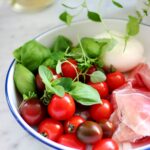Introduction to Foraging
Imagine stepping into the great outdoors, surrounded by lush greenery and vibrant colors. You take a deep breath, inhaling the fresh air filled with earthy aromas. Now, picture yourself not just enjoying this beauty but also gathering delicious, wild foods that nature has to offer. Foraging is more than just a hobby; it’s an adventure that connects you with the land around you.
As we become increasingly aware of where our food comes from, foraging taps into ancient traditions while offering modern-day benefits. It’s about embracing sustainability and discovering flavors beyond what the grocery store can provide. So grab your basket and let’s dive into the art of foraging! Whether you’re in a bustling city park or a quiet forest trail, edible treasures are waiting to be found.
Understanding and Identifying Edible Plants
Understanding which wild plants are edible can be a thrilling journey. It begins with keen observation and curiosity about the world around you.
Start by familiarizing yourself with common edible species in your area. Field guides or mobile apps can provide valuable visuals for quick identification. Look for distinct characteristics like leaf shape, flower color, and growth patterns.
Pay attention to seasons as well. Some plants may only appear at certain times of the year, while others thrive all season long.
Always remember that not everything green is safe to eat. The old saying “when in doubt, throw it out” holds true here. Some plants have toxic look-alikes that could lead to serious health issues.
Taking a class or joining local workshops can deepen your knowledge significantly. Hands-on experience coupled with expert guidance builds confidence in your foraging adventures.
Tools and Equipment for Foraging
When heading out foraging, having the right tools can make all the difference. A sturdy basket or bag is essential for collecting your finds. Opt for something breathable to keep your plants fresh.
A good pair of gloves protects your hands from thorns and allergens. You never know when you might stumble upon stinging nettles or other prickly plants.
An identification guidebook specific to your region is invaluable. Look for one with clear pictures and descriptions so you can confidently identify edible species.
Additionally, a small trowel helps in digging up roots or mushrooms without damaging them. Don’t forget a notebook to jot down notes about locations and plant characteristics—that way, you’ll remember what worked well on previous outings.
Consider a camera to capture beautiful moments in nature. Documenting your journey enriches the experience and could inspire others to go out and explore too!
Recipes Using Wild Foraged Ingredients
Foraging adds a new dimension to your cooking. Imagine the flavors of freshly picked wild garlic or vibrant dandelion greens in your dishes.
One simple recipe is wild salad. Combine young nettles, chickweed, and wood sorrel for a fresh burst of flavor. Drizzle with olive oil and lemon juice for an invigorating dressing.
Another delightful option is mushroom risotto using locally sourced chanterelles or porcini mushrooms. Their earthy taste elevates this classic dish into something extraordinary.
For dessert, consider making elderflower cordial. Steep flowers in water with sugar and lemon zest to create a refreshing summer drink.
Experimenting with these ingredients not only enhances meals but also deepens your connection to nature’s bounty. Each season offers unique finds waiting to be transformed into culinary delights right from your backyard.
Finding Local Foraging Groups and Classes
Connecting with local foraging groups can transform your foraging journey. These communities often share invaluable knowledge and experience.
Start by checking social media platforms. Many cities have Facebook groups dedicated to wild food enthusiasts. You’ll find people sharing tips, locations, and events.
Local nature centers and botanical gardens frequently offer classes or workshops. They provide structured learning opportunities led by experienced instructors.
Consider visiting farmers’ markets too. Vendors sometimes know local foragers and can point you in the right direction.
Meetup.com is another great resource. Search for gatherings that focus on outdoor activities or edible plants.
Don’t underestimate word of mouth. Talk to friends or family who might already be involved in this thriving community! Engaging with others not only enhances your skills but also deepens your appreciation for nature’s bounty.
Conclusion: The Benefits of Foraging for Food and Nature
Foraging opens a door to a world rich with flavors and experiences. It reconnects us with nature, reminding us of the abundance around us. When you gather your own food, there’s a sense of accomplishment that comes with it.
The benefits extend beyond just finding something tasty to eat. Foraging can improve mental health by encouraging time spent outdoors. Breathing fresh air and immersing yourself in natural surroundings boosts mood and reduces stress levels.
Learning about local ecosystems fosters appreciation for biodiversity. Each plant has its role within the environment, contributing to the balance of life. By foraging responsibly, you help sustain these habitats while nurturing your relationship with nature.
Sharing your findings or even meals created from wild ingredients brings people together. It’s about community as much as it is about nutrition—stories shared over a plate filled with vibrant plants speak volumes.
Whether you’re searching for mushrooms in the woods or picking berries at a park, every excursion holds potential knowledge and joy waiting to be uncovered. This journey encourages exploration and curiosity, making it more than just gathering food; it’s an adventure—a path leading toward deeper connections both with our plates and our planet.


